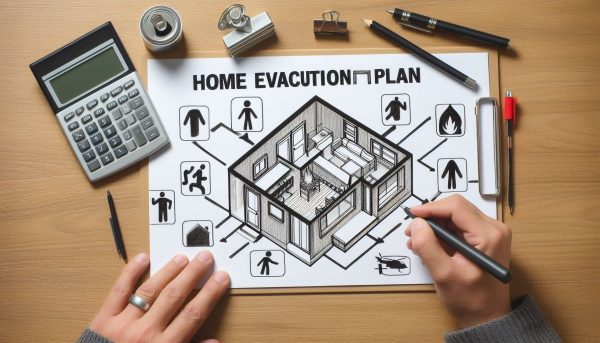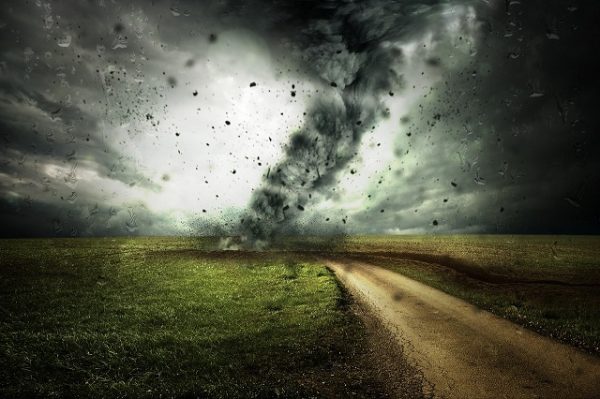A home evacuation plan is your step-by-step guide to safely leaving your house when danger strikes. It prepares your family for various emergencies like fires, natural disasters, or other threats, ensuring everyone knows how to get out quickly and securely.
What Is a Home Evacuation Plan?
A home evacuation plan is more than just a map; it’s a vital exit strategy designed to help everyone in your household quickly and safely escape during an emergency. This plan details crucial elements like the location of exits, clear escape routes, designated safe zones, and family meet-up points. Its sole purpose is to ensure you can navigate out of your home efficiently when every second counts.
You might think you know your home, but under the stress of an emergency, even familiar surroundings can become disorienting. A little proactive planning can drastically improve your family’s response. Having even the most basic home evacuation plan can literally be the difference between life and death. For instance, in a fire, knowing your alternate exits and the fastest safe route out could be critical if the main door is blocked.
Beyond just yourself, a well-defined evacuation plan ensures every member of your family, including visitors unfamiliar with your home’s layout, knows exactly what steps to follow in an emergency. This collective understanding is key to a swift and safe evacuation.
Creating Your Custom Evacuation Plan: Simple Steps, Serious Preparation
Developing your own unique home evacuation plan is quite straightforward, but it does require careful planning and a bit of research, even though it’s about your own familiar home.
Mapping Your Escape Routes: Multiple Paths to Safety
For optimal safety, identify multiple escape routes from every room in your home, with special attention to each person’s bedroom. Ensure that everyone in your household is thoroughly familiar with these paths. Once you’ve identified all potential exits, create a detailed map clearly showing all routes with arrows pointing towards each exit point. This visual aid will significantly help your family understand precisely how to evacuate safely and quickly during an emergency.
Identify All Your Exit Points: Doors, Windows & Beyond
Start by identifying all possible exits from every room and area in your home. This means looking beyond just interior doors. Consider every external door or window that could serve as an escape route if needed. Don’t forget to include any stairs or ladders that might be part of your escape plan. If you live in a high-rise building or apartment complex, remember to extend these exit point considerations to include all building-specific evacuation routes.

Emergency Contacts
Ensure that everyone in your household has a comprehensive list of emergency contact numbers. This includes phone numbers for family members, close friends, and local emergency services. A copy of this crucial list should be stored in each person’s phone, as well as a physical copy within your evacuation kit – consider it your essential “digital go-bag” backup.
Assemble Your Emergency Kits: Grab-and-Go Essentials for Evacuation
Prepare an emergency/survival kit with essentials like flashlights, a first aid kit, water, non-perishable snacks, and appropriate outdoor clothes. Store this kit in a designated, easily accessible location that anyone can quickly grab during an evacuation. Additionally or optionally, prepare a high-value kit containing important documents, cash, jewelry, and family heirlooms. Pack these irreplaceable items into a single bag, ready to go. Searching for these crucial items individually during an emergency is simply not advisable.
Establish Your Family’s Safe Zones: Where to Meet After Evacuation
Designate clear safe zones on your evacuation map. These are the specific spots where everyone must gather after safely exiting the house, allowing you to quickly account for every family member. Mark these zones prominently with large, directional arrows so they’re easily spotted, even in low visibility conditions like at night.
Secondary Meeting Place: What to Do If Safe Zones Are Inaccessible
If your primary safe zones are inaccessible for any reason, or if family members become separated, it’s crucial to have a designated secondary meeting place within walking distance. This should be a pre-arranged location outside your immediate home, easy for everyone to find. Think of a neighbor’s house, a local park, or any other easily identifiable landmark that serves as a reliable fallback point after evacuating.
Pet Evacuation Plan
If you have pets, establish a system for their quick and safe exit. Dogs will need leashes, cats require carriers, hamsters a small box, and so on. Additionally, prepare a go-bag specifically for your pet’s needs, sufficient for one to three days. It doesn’t have to be complicated; simply consider what you’d pack for them on a short trip.
Practice Makes Perfect: Regular Drills for Emergency Preparedness
Regularly practice your home evacuation plan with your family, including fire drills and natural disaster drills. This practice will prove invaluable if the plan needs to go live in the middle of the night when everyone is groggy; these ingrained drills will help them make it through.

When to Evacuate: Essential Triggers for Your Home Evacuation Plan
Knowing when to implement your home evacuation plan is as crucial as having one. Here are the critical situations that demand immediate action:
- Flooding: Whether your home is flooding or waters are rising outside, evacuate to avoid becoming trapped or injured. Floodwaters can surge unexpectedly.
- Fires: If a fire starts in your home, evacuate immediately. Fires spread rapidly, making quick exit vital for survival.
- Gas Leaks: Suspect a gas leak? Evacuate your home instantly and contact your gas company. Gas leaks can lead to explosions or severe fires.
- Earthquakes: If an earthquake strikes, evacuate if necessary to escape falling debris or structural collapse. Get to a safe outdoor location quickly.
- Chemical Spills: A chemical spill nearby means you need to evacuate fast to avoid exposure to dangerous substances. Get away from the area as soon as possible.
- Tornadoes & Hurricanes: For approaching tornadoes, seek underground shelter if available; otherwise, evacuate. For hurricanes, evacuate based on storm severity to avoid injury or death from severe damage.
Beyond these common scenarios, be prepared for other threats like radiological emergencies (e.g., nuclear accidents), civil unrest or riots, terrorism attacks, active shooter situations, dam failures, and wildfires. Your evacuation plan is your best defense against these diverse and dangerous events.
Why You Need a Home Evacuation Plan: Peace of Mind & Preparedness
Many of us go through life without ever truly thinking about a home evacuation plan, but preparing for the unexpected is crucial. By taking the time to develop a clear plan and share it with your family, you can ensure everyone knows exactly what to do when an emergency strikes. Just a little effort now can provide immense peace of mind, knowing you’re ready for whatever comes your way. A well-planned and well-rehearsed home evacuation plan isn’t just a good idea; it can literally be the difference between life and death for you and your loved ones, enabling a quick and safe evacuation when it matters most.




